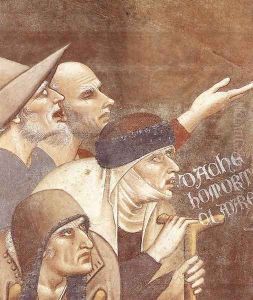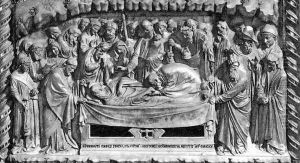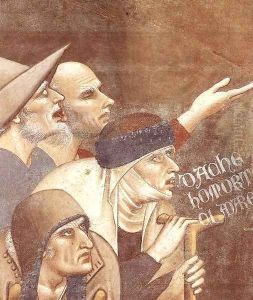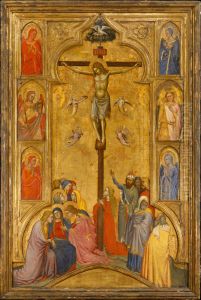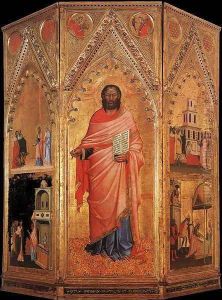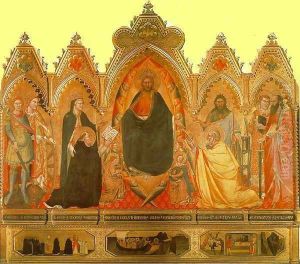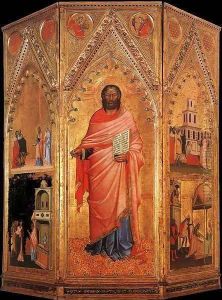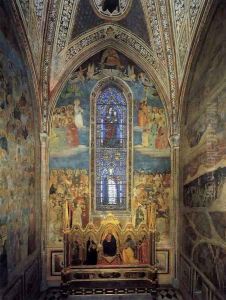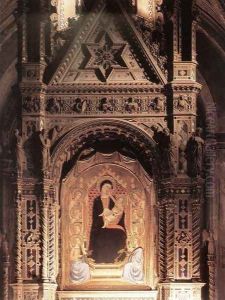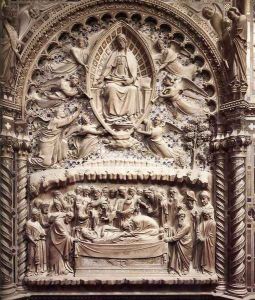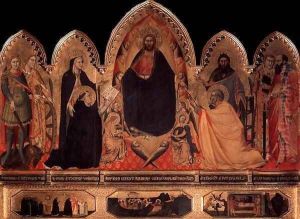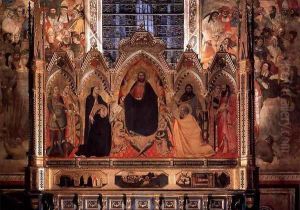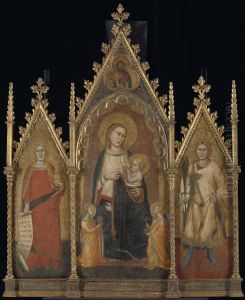Orcagna Paintings
Andrea di Cione, known as Orcagna, was an Italian painter, sculptor, and architect active during the mid-14th century in Florence. His nickname, Orcagna, is a contraction of 'Arcagnuolo,' meaning 'archangel,' a title that reflects the high regard in which he was held. Orcagna is often considered one of the most prominent artists of his time in Florence, working during a period of significant artistic development that set the stage for the Renaissance.
Orcagna was born around 1308 into a family of artists; his brothers Jacopo di Cione and Nardo di Cione were also painters. Little is known about Orcagna's early life and training, but it is believed that he was a pupil of Andrea Pisano or his followers. By the mid-14th century, Orcagna had become a master artist, taking on significant commissions that displayed his talents in painting, sculpture, and architecture.
Among his most notable works is the Tabernacle at Orsanmichele (1355-1359), which showcases his skills in all three disciplines. The structure is adorned with intricate sculptures and contains a series of paintings depicting the life of the Virgin Mary. This work exemplifies the Gothic style that was prevalent in Florence at the time, characterized by elaborate ornamentation and a strong sense of narrative in the imagery.
Orcagna's painting was also profoundly influenced by the work of Giotto, whose emphasis on solidity of form and volumetric figures can be seen in Orcagna's approach to composition and figure painting. However, Orcagna's work also shows a unique synthesis of Gothic ornamental elements with a more naturalistic approach to the human figure and space.
Not much is known about Orcagna's life outside of his artistic production, and historical records provide limited information. He was a member of the Guild of Painters in Florence and worked on various commissions for churches and public spaces. Orcagna's work was highly regarded by his contemporaries, and it influenced later generations of artists, including those who would go on to develop the stylistic innovations of the early Renaissance.
Orcagna died around 1368, and his legacy as an artist lies in his multifaceted contributions to painting, sculpture, and architecture. His works remain as testaments to the transitional period in art history where the seeds of the Renaissance were being sown in the fertile artistic landscape of 14th century Florence.
